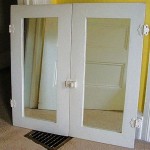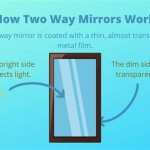Screen Mirroring Mac Without Apple TV
Screen mirroring allows users to project their Mac's display onto a larger screen, enhancing presentations, entertainment, and overall productivity. While Apple TV is a common solution for this, various alternative methods exist for those without this device. This article explores several options for screen mirroring a Mac without Apple TV, outlining the necessary hardware and software requirements for each.
AirPlay-Compatible Smart TVs: Many modern smart TVs come equipped with built-in AirPlay 2 support. This technology allows direct wireless streaming from Apple devices, including Macs, without the need for an Apple TV intermediary. To check for AirPlay compatibility, consult the TV's user manual or manufacturer's website. If the television supports AirPlay, ensuring both the Mac and TV are connected to the same Wi-Fi network is crucial. Screen mirroring can then be initiated from the Control Center in macOS by selecting the AirPlay icon and choosing the corresponding TV.
Third-Party AirPlay Receivers: Devices like Roku, Amazon Fire TV Stick, and some game consoles provide alternative platforms that can function as AirPlay receivers. These devices connect to a TV's HDMI port and, after setup, can receive AirPlay streams from a Mac. The setup process generally involves installing an AirPlay receiver app or enabling the feature within the device’s settings. Similar to mirroring directly to a smart TV, a shared Wi-Fi network is essential.
Chromecast: Google Chromecast offers a cost-effective method of mirroring a Mac screen. Chromecast devices plug into a TV's HDMI port and leverage the Google Cast protocol. While not directly compatible with AirPlay, screen mirroring can be achieved using the Google Chrome browser. By installing the Google Cast extension, users can cast their entire desktop or specific Chrome tabs. Network compatibility is again paramount, with both the Mac and Chromecast requiring connection to the same network.
Mirroring Apps for Windows Devices: If a Windows computer is already connected to the desired display, mirroring apps designed for cross-platform screen sharing can be utilized. Applications like AirServer and Reflector transform a Windows PC into an AirPlay receiver. Once installed and running on the Windows machine, the Mac will detect it as an AirPlay destination. The benefit of this approach is the leveraging of an existing setup without requiring additional hardware. However, performance can be influenced by the Windows computer's processing power.
Cabled Connections: For the most stable and latency-free experience, a direct wired connection is often the best solution. Depending on the Mac model and the available ports on the TV or display, different cable configurations are possible. For Macs with HDMI ports, a standard HDMI cable can establish a direct connection. For Macs with USB-C or Thunderbolt ports, a suitable adapter or dongle may be required to convert the signal to HDMI or another compatible format. This method bypasses wireless network dependencies, making it ideal for situations requiring high-bandwidth and low-latency transmission, such as gaming or video editing.
Utilizing Projectors: Projectors frequently offer multiple input options, including HDMI and VGA. Similar to connecting to a TV, a compatible cable is needed to link the Mac to the projector. If the projector has wireless capabilities, it may support screen mirroring protocols like Miracast, which can be accessed through specific software on the Mac. Checking the projector's specifications is crucial to determining the optimal connection method.
Software Solutions for Screen Sharing and Recording: While not true mirroring, some software solutions offer screen sharing and recording functionalities that can achieve a similar outcome. Applications such as Zoom, Microsoft Teams, and specialized screen recording software allow sharing a Mac's screen with remote viewers. While primarily designed for collaboration and presentations, these tools can be utilized to display content on a larger screen by connecting the viewing device to the display. This approach is especially useful for temporary screen sharing rather than persistent mirroring.
Considerations for Choosing a Method: The best method for screen mirroring a Mac without Apple TV depends on several factors. Network stability and bandwidth are crucial for wireless methods like AirPlay and Chromecast. For lag-sensitive applications, a wired connection is generally preferred. The availability of existing hardware, like a Windows PC or smart TV, can also influence the choice. Finally, budget considerations might steer users towards more cost-effective solutions like Chromecast or utilizing existing software.
Troubleshooting Common Issues: If encountering issues with screen mirroring, several troubleshooting steps can be taken. Ensuring both the Mac and the receiving device are on the same network and that the network is functioning correctly is a primary step. Restarting both devices can often resolve connectivity issues. Checking for software updates on both the Mac and the receiver can also address compatibility problems. If using a wireless method, minimizing interference from other devices on the network can improve performance.

Top 3 Awesome Ways To Mirror Mac Tv Without Apple

How To Mirror Mac Tv Without Apple

Screen Mirroring Iphone Or Macbook To Tv Without Apple

5 Solutions To Airplay Mirroring Without Apple Tv 2024 Dr Fone

How To Airplay Mirror Mac Samsung Smart Tv Without Apple Redmond Pie

Easiest Way To Connect Mac Sharp Tv Wireless Screen Mirror

How To Mirror Mac Screen Samsung Tv Without Apple

How To Mirror A Mac Tv Osxdaily

2024 Latest How To Airplay Your Device Tv Or Mac

Screen Mirroring Mac To Tv Wirelessly Without Apple








